Osteochondrosis is a medical term that describes a violation of the integrity of the cartilage surfaces of bones. The disease is most commonly associated with damage to the intervertebral discs.
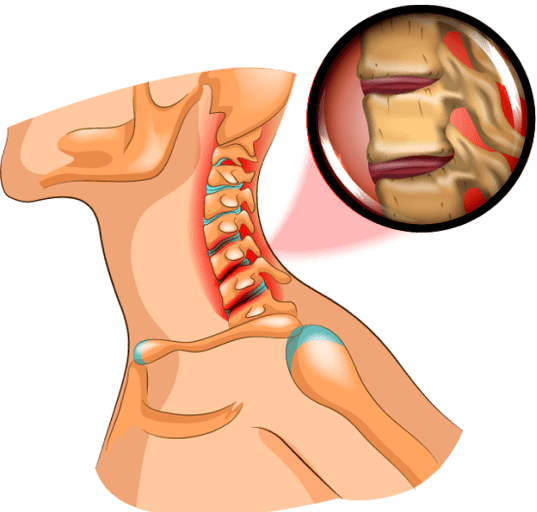
Intervertebral discs are a type of shock absorber that softens the pressure on the spine under load. Osteochondrosis impairs quality of life, causing pain in the back, neck, head, tinnitus.
There are two perspectives on diagnosis. Foreign experts attribute the disorder to childhood and adolescent diseases. They are thought to be more common in children because their bones are in the developmental stage. Russian doctors mainly diagnose osteochondrosis in patients aged 25-55 years. The signs, causes, and types of the disease are the same in the two cases.
How is osteochondrosis defined?
- Are there persistent or recurrent back pain or muscle tension?
- Is there goosebumps on the lower back or neck?
- Do you feel like you're "shooting" in the back?
- Do you feel pain when you raise your arms or shake your head to the side?
- Do you feel dizzy regularly?
- Do you experience noise or nausea?
If at least one answer is yes, you may want to contact a professional to conduct a study. If the diagnosis reveals a violation, your doctor will prescribe treatment and help protect yourself from more severe and painful symptoms.
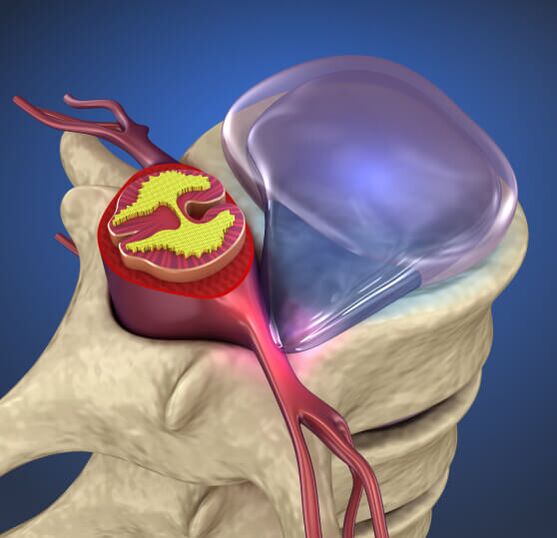
What causes osteochondrosis
The huge incidence of osteochondrosis is due to the fact that people are most often in a vertical position. In this case, the spine and plates are exposed to increased stress. If they do not sit, lie and stand properly, the sheets will lose their cushioning ability.
Over time, the lining of the disc ruptures and the hernial protrusions appear. They begin to squeeze the blood vessels, the roots of the spinal cord, or the brain itself. As a result, pains and reflex tensions appear in the muscles.
The risk group includes the middle-aged and the elderly. Office workers, professional drivers, tall people most often face this disease. Risk factors for developing severe symptoms of the disorder may include:
- goosefoot;
- heredity;
- overweight;
- hypodynamics.
Causes of articular cartilage disorders:
Heavy load handling.
Improper posture while sitting, standing or lying down.
Injuries, overload.
Excessive stress during sports.
High humidity and low temperature.
Activities involving frequent changes in body position.
Types of osteochondrosis
Osteochondrosis can develop in any part of the spine. According to the localization, the disease is divided into: neck, chest and lumbar. The latter type occurs in 50% of cases.
Lumbar osteochondrosis
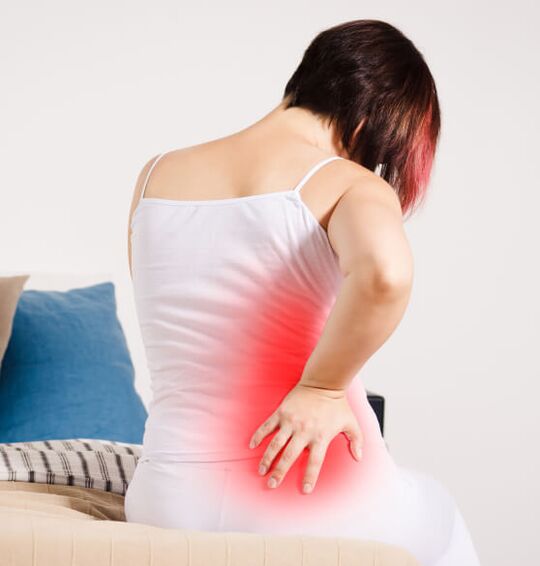
A similar diagnosis is made for both men and women. This is due to the increased load that occurs during walking, running, exercising and sitting for long periods of time. The lumbar spine consists of 5 vertebrae, between which are discs that provide flexibility. If the metabolic process does not occur, the intervertebral discs lose their properties and pain occurs.
Symptoms:
- Dull or sharp back pain that gets worse with movement.
- Pain in the legs, pelvic organs, sacral region.
- Restriction of movement or sensitivity.
- Atrophy of the leg muscles during the acute course of the disease.
Lumbar osteochondrosis should be treated. In the absence of therapy, dangerous complications can occur: sciatica, hernia, protrusion. As a result, the natural blood supply to the spinal cord is disrupted, leading to paralysis of the lower extremities.
Cervical osteochondrosis
"Be sure to turn your head, " doctors urge. This will prevent a dangerous diagnosis of cervical spine osteochondrosis. The neck is the most mobile part of the spine. The class consists of 7 vertebrae. The disease is caused by metabolic disorders in the body, the presence of salts in the neck, or the frequent discomfort of the head.
Symptoms:
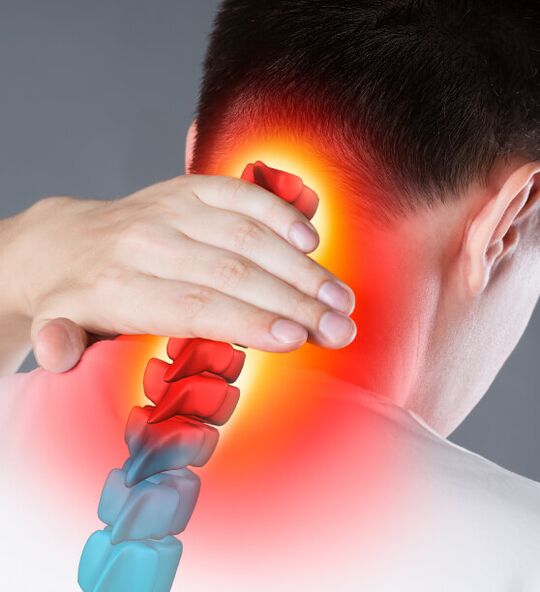
- Headache;
- Pain in the heart region;
- Flashing "flies" in mind;
- Hearing loss;
- Crunch in the cervical spine;
- Pain in the arm or shoulder joint;
- Numbness of the limbs.
Experts note that this type of disease is one of the most dangerous because it can cause poor blood circulation, migraines, dystonia and more serious illnesses.
Chest osteochondrosis
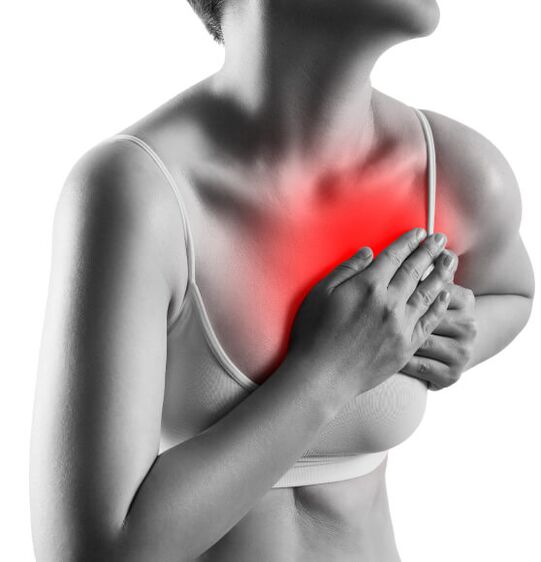
Chest spinal disorders are less common because the vertebrae are inactive. Pain in this area of the body is experienced by many people who do hard physical work or have a sedentary profession. Osteochondrosis can be caused by a disturbed metabolic process, increased load on the intervertebral discs.
Symptoms:
- Pain or tightness in the chest area.
- Pain between the shoulder blades when raising the arms.
- Skin sensitization disorders.
In the case of an acute disorder, two symptoms may occur: dorsago and dorsalgia. Dorsago is associated with acute chest pain and shortness of breath. In dorsalgia, the pain in the vertebral region of the class is not very strong, but gradually increases. The disease is often confused with other chest pathologies: heart attack, pneumonia, angina pectoris, etc. The diagnosis is made only by a specialist, based on examination and research.
Stages of osteochondrosis
- There are no obvious symptoms in the first stage. With periodicity, discomfort occurs in the spine, resulting in fatigue or excessive physical exertion. The disease can be detected by routine examination, X-ray or CT scan.
- The second stage is accompanied by pain syndrome as the process of cartilage tissue destruction begins and the gap between the plates decreases. The pain at this stage is relieved by medications prescribed by a doctor.
- In the third stage, the deformity of the spine begins: the fibrous ring breaks, an intervertebral hernia appears. Properly prescribed treatment can continue to improve the condition of the spine.
- The fourth stage is the irreversible changes in the spine in which one has difficulty moving. Between the vertebrae, the bone tissue that connects the vertebrae grows. Most often, this form of osteochondrosis leads to disability.
Diagnostic methods
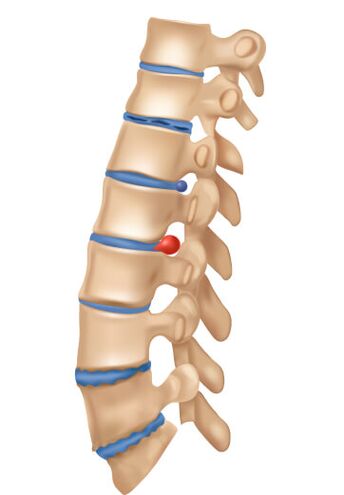
To determine the extent of the disease, to check sensitivity and reflexes, the doctor will perform a physical examination. In addition, blood and urine tests are performed to study the indicators of calcium metabolism.
Diagnostic methods are used to make an accurate diagnosis:
- Vascular ultrasound. Determination of the extent of impaired blood flow to vertebral arteries.
- Spinal X-ray.
- UKT. Preparation of a three-dimensional image of the study area to detect small movements of the vertebrae.
- UMRI. Examination of the condition of soft tissues to assess the condition of the spinal cord and to show the internal structure of the plates.
Treatment

Osteochondrosis is treated comprehensively. The main goal of therapy is to suppress painful feelings, eliminate muscle stiffness and stiffness in movements due to pain. It is important that you do not self-medicate, but consult a professional and follow the recommendations.
To treat the spine, your doctor will prescribe non-steroidal anti-inflammatory drugs to help relieve inflammation and swelling. Muscle relaxants are responsible for reducing muscle cramps. Ointments are used to relieve pain. They can prescribe antioxidants and vitamins to protect nerve tissue.
Prophylaxis
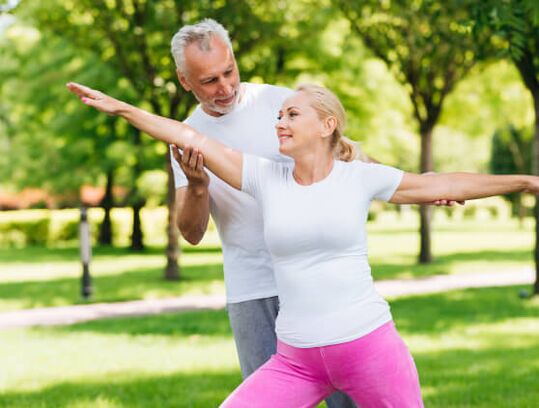
By following the methods of prevention, it is possible to preserve the health of the spine and prevent the appearance of symptoms or complications of osteochondrosis:
- drinking enough water; weight control;
- consumption of collagen-rich foods;
- selection of an orthopedic mattress to support the body;
- Regular exercise.
Alternative methods can be tried: acupuncture, qigong or massage. Before starting any procedure, consult your doctor to ensure the health of your musculoskeletal system.























